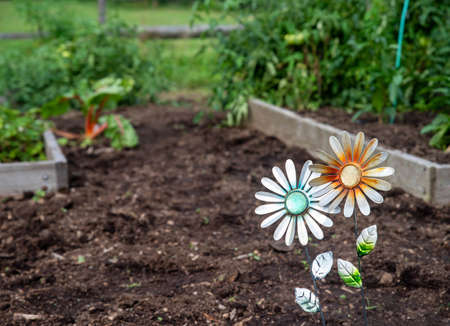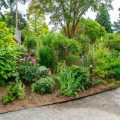1. Understanding Drought-Resistant Landscaping
Drought-resistant landscaping, also known as xeriscaping, is a smart and sustainable way to create beautiful outdoor spaces while conserving water. This approach involves using plants that are naturally adapted to thrive in dry conditions with minimal irrigation. Its especially useful in regions of the U.S. where water resources are limited or droughts are common.
Many areas across the United States, including the Southwest, parts of California, and even some sections of the Midwest, experience frequent drought conditions. In these climates, traditional lawns and high-water-use plants can be difficult and costly to maintain. Drought-resistant landscaping offers a practical solution that not only saves water but also reduces maintenance and supports local ecosystems by using native plants.
Benefits of Drought-Resistant Landscaping
| Benefit | Description |
|---|---|
| Water Conservation | Uses less water by relying on drought-tolerant native plants. |
| Lower Maintenance | Reduces the need for mowing, fertilizing, and constant care. |
| Cost Savings | Lowers utility bills and gardening expenses over time. |
| Environmental Support | Encourages biodiversity and provides habitat for native wildlife. |
| Curb Appeal | Offers unique beauty through diverse textures, colors, and plant types. |
Why Native Plants Matter
Native plants are species that have naturally evolved in a specific region over thousands of years. They are well-adapted to local soil types, climate conditions, and pests. When used in landscaping, these plants require less water, fewer chemical inputs, and provide important resources for pollinators like bees and butterflies.
This makes native plants an excellent choice for drought-resistant gardens in the U.S., where different regions—from the arid deserts of Arizona to the coastal plains of Texas—have their own unique native flora. Selecting region-appropriate native plants not only ensures healthier landscapes but also helps preserve local ecological balance.
Common U.S. Regions with Drought Conditions
| Region | Typical Climate Characteristics | Drought Frequency |
|---|---|---|
| Southwest (e.g., Arizona, New Mexico) | Hot, arid summers with low rainfall | High |
| California (especially Southern) | Mediterranean climate with dry summers | High |
| Texas & Great Plains | Variable rainfall; long dry spells common | Moderate to High |
| Southeast (e.g., Georgia, Florida) | Humid but prone to seasonal droughts | Moderate |
| Northern Midwest (e.g., Iowa, Nebraska) | Cold winters, hot summers; irregular precipitation patterns | Moderate |
The Big Picture: Sustainability at Home
Drought-resistant landscaping isnt just about saving water—its about creating a yard or garden thats in harmony with its environment. With climate change making weather patterns more unpredictable, this type of landscaping helps homeowners prepare for drier times while still enjoying vibrant outdoor spaces all year round.
In the next section, we’ll explore some of the top native plant options ideal for various regions across the U.S., helping you choose the right ones for your location and landscape goals.
2. Why Choose Native Plants?
When planning a drought-resistant landscape, native plants are one of the best choices you can make. These are plants that naturally grow in your region and have adapted over time to the local climate, soil, and wildlife. This makes them especially well-suited for water-wise gardens across the U.S.
Better Adaptability
Native plants are already used to the conditions in your area—whether its hot summers, low rainfall, or dry soil. Because of this natural adaptation, they usually need less water than non-native species once theyre established. They also tend to be more resilient during heatwaves and drought periods.
Lower Maintenance
If youre looking for a low-maintenance garden, native plants are a smart pick. They typically require less fertilizing, pruning, and pest control. Since theyre used to the local environment, they thrive with minimal human intervention—saving you both time and effort.
Ecological Benefits
Choosing native plants doesnt just help your garden—it helps the planet too. These plants support local ecosystems by providing food and shelter for birds, bees, butterflies, and other beneficial insects. This promotes biodiversity and strengthens the health of your local environment.
Key Benefits of Native Plants
| Benefit | Description |
|---|---|
| Water Efficiency | Use less water due to natural drought tolerance |
| Less Maintenance | Lower need for fertilizers, pesticides, and pruning |
| Pest Resistance | Better resistance to local pests and diseases |
| Wildlife Support | Provide habitat and food for native birds and pollinators |
Good to Know:
Native plant options vary widely by region. Whether youre in the Southwest desert or the Pacific Northwest, theres a variety of beautiful native species perfect for your drought-tolerant landscape.
![]()
3. Top Native Plants for the Western U.S.
The Western United States, including states like California, Arizona, and Nevada, is known for its arid climate and frequent drought conditions. Choosing native plants that naturally thrive in these dry environments can help create beautiful, low-maintenance landscapes that conserve water. Here are some top drought-tolerant native plants perfect for Western gardens:
Popular Drought-Resistant Native Plants
| Plant Name | Scientific Name | Growing Conditions | Key Features |
|---|---|---|---|
| California Poppy | Eschscholzia californica | Full sun, well-drained soil | Bright orange flowers; blooms in spring; attracts pollinators |
| Manzanita | Arctostaphylos spp. | Full sun to partial shade; dry soils | Evergreen shrub with red bark; supports native wildlife |
| Desert Marigold | Baileya multiradiata | Full sun; sandy or gravelly soils | Yellow daisy-like flowers; long blooming season |
| Ceanothus (California Lilac) | Ceanothus spp. | Full sun; well-drained soil | Purple-blue flowers; evergreen foliage; low water needs |
| Brittlebush | Encelia farinosa | Full sun; hot, dry locations | Silvery leaves; yellow blooms in spring; great for desert gardens |
Why Choose Native Plants?
Native plants are adapted to the local environment, making them ideal for surviving with minimal watering and maintenance. They also provide food and shelter for native birds, bees, and butterflies. In Western states where water is a precious resource, using drought-resistant natives helps reduce your water bill and supports the ecosystem.
Tips for Success in Western Landscapes
- Select plants suited to your specific USDA hardiness zone.
- Group plants by similar water needs to make irrigation more efficient.
- Add mulch around plants to retain moisture and reduce weeds.
- Avoid overwatering—most natives prefer dry conditions once established.
Drought-tolerant native plants not only save water but also bring natural beauty and resilience to your landscape. With so many options available for the Western U.S., its easy to design a garden that thrives even in dry conditions.
4. Top Native Plants for the Southwest and South-Central Regions
When it comes to drought-resistant landscaping in the Southwest and South-Central United States—especially in states like Texas, New Mexico, and Oklahoma—choosing native plants is a smart move. These plants are naturally adapted to the region’s hot summers, low rainfall, and tough soil conditions. They require less water, are more resilient to local pests, and help support native wildlife.
Purple Coneflower (Echinacea purpurea)
This hardy perennial is a favorite among gardeners and pollinators alike. Purple coneflowers bloom from early summer through fall, producing vibrant purple-pink petals surrounding a spiky orange center. Not only are they beautiful, but they also attract bees, butterflies, and birds.
Why It Works
- Tolerates heat and poor soil
- Low water requirements once established
- Provides nectar for pollinators
Desert Willow (Chilopsis linearis)
Despite its name, desert willow isnt a true willow—it just looks like one. This small deciduous tree thrives in arid climates and produces trumpet-shaped flowers in shades of pink, lavender, or white from late spring through summer.
Why It Works
- Drought-tolerant and heat-loving
- Blooms attract hummingbirds and bees
- Minimal maintenance required
More Native Drought-Tolerant Plants for the Region
Here are additional native plants that do well in the dry landscapes of Texas, New Mexico, and Oklahoma:
| Plant Name | Type | Key Features |
|---|---|---|
| Blackfoot Daisy (Melampodium leucanthum) | Perennial Groundcover | Fragrant white blooms, full sun, very low water needs |
| Big Bluestem (Andropogon gerardii) | Native Grass | Tall grass with reddish stems; great for erosion control and habitat cover |
| Autumn Sage (Salvia greggii) | Shrub-like Perennial | Blooms nearly year-round; attracts hummingbirds; drought-hardy |
| Texas Red Yucca (Hesperaloe parviflora) | Succulent Perennial | Tall flower stalks with red blooms; ideal for xeriscaping; deer-resistant |
Selecting native plants like these not only helps conserve water but also creates a thriving ecosystem in your backyard. They bring color, texture, and life to any drought-tolerant landscape while keeping maintenance to a minimum.
5. Top Native Plants for the Southeast and Mid-Atlantic
In the humid yet hot climates of the Southeast and Mid-Atlantic—think Georgia, South Carolina, North Carolina, and Virginia—drought-tolerant landscaping is just as important as it is in drier areas. These regions often experience intense summer heat paired with unpredictable rainfall, making it essential to choose native plants that can handle both moisture and dry spells.
Why Native Plants Work Best
Native plants are naturally adapted to local climate conditions, which means they typically require less water, fertilizer, and maintenance. They also provide habitat and food for pollinators like bees, butterflies, and birds—all important parts of a healthy ecosystem.
Drought-Tolerant Natives for the Southeast and Mid-Atlantic
Here are some top-performing native plants that thrive in the heat and humidity while still standing up well to dry periods:
| Plant Name | Type | Key Features | Ideal Growing Conditions |
|---|---|---|---|
| Butterfly Weed (Asclepias tuberosa) | Perennial Wildflower | Bright orange blooms; attracts monarchs | Full sun; well-drained soil |
| Little Bluestem (Schizachyrium scoparium) | Ornamental Grass | Blue-green foliage turns reddish-orange in fall | Full sun; tolerates poor soils |
| Purple Coneflower (Echinacea purpurea) | Perennial Wildflower | Purple-pink blooms; loved by pollinators | Full sun to part shade; drought-tolerant once established |
| Eastern Red Columbine (Aquilegia canadensis) | Perennial Wildflower | Nodding red-yellow flowers; attracts hummingbirds | Part shade to full sun; moist to dry soils |
| Southern Wax Myrtle (Myrica cerifera) | Shrub/Small Tree | Aromatic foliage; fast-growing screen or hedge plant | Full sun to part shade; adaptable to various soils including sandy areas |
| Oakleaf Hydrangea (Hydrangea quercifolia) | Shrub | Large white blooms; beautiful fall foliage color | Part shade preferred; drought-resistant once established |
| Lanceleaf Coreopsis (Coreopsis lanceolata) | Perennial Wildflower | Crowded yellow blooms all summer long; low-maintenance | Full sun; dry to average soil conditions |
Tips for Success in Humid Climates with Dry Spells
- Select well-draining soil: Even in humid areas, proper drainage helps prevent root rot during rainy periods.
- Add mulch: Mulching keeps roots cool and retains moisture during dry spells.
- Avoid overwatering: Once established, these natives rarely need supplemental watering except during extreme droughts.
- Group similar plants together: This makes it easier to manage watering needs and create a cohesive look.
The Southeast and Mid-Atlantic have unique growing challenges, but by choosing tough native plants like butterfly weed and little bluestem, you can create a landscape that’s both beautiful and built to last through hot summers and unexpected droughts.
6. Design Tips and Maintenance for a Drought-Tolerant Landscape
Creating a beautiful, drought-tolerant garden using native plants doesn’t mean sacrificing color or curb appeal. With thoughtful planning, the right plant combinations, and low-maintenance care practices, you can enjoy a vibrant yard that conserves water all year long.
Smart Garden Layout Tips
- Group by Water Needs: Place plants with similar water requirements together to avoid overwatering or underwatering specific areas.
- Use Zones: Divide your landscape into hydrozones—high, moderate, and low water use—to guide irrigation planning.
- Create Layers: Combine groundcovers, shrubs, and small trees to build visual interest while maximizing space and shade.
- Focus on Function: Use native grasses or gravel paths to define walkways and reduce lawn space.
Choosing Complementary Native Species
Selecting the right mix of native plants ensures your landscape thrives with minimal upkeep. Aim for a variety of textures, heights, bloom times, and colors to keep your yard interesting year-round.
| Plant Type | Example Native Plants | Benefits |
|---|---|---|
| Groundcovers | Purple Poppy Mallow, Creeping Oregon Grape | Suppress weeds, reduce soil erosion |
| Shrubs | Manzanita, Western Sandcherry | Add structure, attract pollinators |
| Perennials | Black-Eyed Susan, Blanket Flower | Provide seasonal color, support wildlife |
| Trees | Desert Willow, Eastern Redbud | Create shade, reduce heat islands |
Year-Round Maintenance Tips
Irrigation
- Water Deeply but Infrequently: Encourage deep root growth by watering less often but thoroughly.
- Use Drip Systems: Deliver water directly to the roots to minimize evaporation and runoff.
- Irrigate Early: Water in the early morning to reduce loss from heat and wind.
Mulching
- Add Organic Mulch: Apply 2–3 inches of bark mulch around plants to retain moisture and regulate soil temperature.
- Avoid Crowding: Keep mulch a few inches away from plant stems to prevent rot.
Pruning & Clean-Up
- Prune Seasonally: Trim dead or damaged branches in late winter or early spring to encourage healthy new growth.
- Remove Weeds Promptly: Prevent invasive species from competing with your native plants for water and nutrients.
A Few Extra Tips for Success
- Add Hardscaping Elements: Use rocks, gravel paths, or decorative boulders for structure and style without extra watering needs.
- Create Wildlife Habitat: Incorporate birdbaths or nesting boxes to support local fauna attracted by your native plants.
- Avoid Fertilizers: Most native plants thrive in poor soils without added chemicals—less is more!
A well-designed drought-tolerant garden not only saves water but also celebrates the natural beauty of America’s diverse native flora. With the right layout, plant choices, and easy maintenance routines, your yard can be both eco-friendly and stunning all year long.


